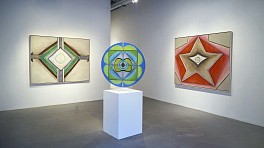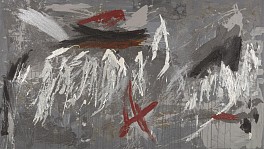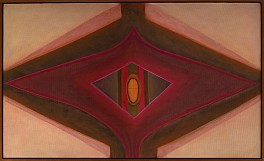Ida Kohlmeyer Exhibition Reviewed in The New York Times by Roberta Smith
April 2, 2020 - Roberta Smith for the New York Times

April 2, 2020 - Roberta Smith for the New York Times

March 30, 2020 - Berry Campbell
Ida Kohlmeyer
VIDEO: Virtual Exhibition Walkthrough
Women of Abstract Expressionism
Inventory Highlights
View Exhibition
Ann Purcell
Upcoming Exhibition: Kali Poems
View Works by Ann Purcell
Judith Godwin
Forbes Magazine: Add to Your list of '5 Women Artists' at These Museums Around The United States
by Chadd Scott
Charlotte Park
Client Testimonial:
"Extremely gratifying to see Paul Kasmin Gallery's eye-opening summer show, Painters of the East End reviewed by Erin Kimmel in this month's Art in America . And smiled extra wide that AbEx talent Charlotte Park is written up in the same paragraph as — and holds her own with— Joan Mitchell. 'Park's virtuosic oil and crayon compositions (ca. 1965 and 1967) feature dendrite-like configurations in a palette of bright pinks, yellows and blues that appear frozen mid twist.' Ten years ago Christine Berry, owner of one of the most engaging and provocative galleries in Chelsea, Berry Campbell, thankfully introduced me to the work of Charlotte Park, who died in 2010 at age 92 in Montauk, where she lived and painted. She was the wife of artist James Brooks, supporting his career at the expense of her own, and dear friends and neighbors of Jackson Pollock and Lee Krasner."
-Adam Beckerman
View Works by Charlotte Park
Yvonne Thomas
Eazel Interactive Exhibition | Yvonne Thomas: Windows and Variations (1963-1965)
Susan Vecsey
blue.
Nassau County Museum of Art, Roslyn Harbor, New York
View Works by Susan Vecsey
Jill Nathanson
LINEA: Studio Notes from the Art Students League of New York
Artist Snapshot: Jill Nathanson
Perle Fine
What We See, How We See
Through April 2021
Parrish Art Museum, Southampton, New York
View Works by Perle Fine
Joyce Weinstein
Postwar Women
Curated by William Corwin
The Art Students League, New York
View Works by Joyce Weinstein

November 16, 2019 - Berry Campbell